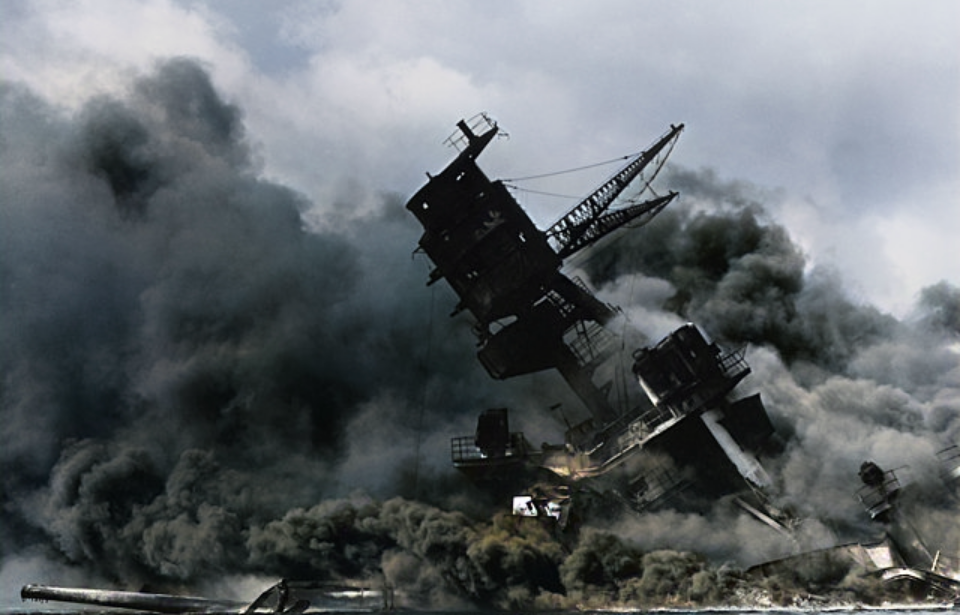The Japanese attack on Pearl Harbor during the Second World War was the catalyst that caused the United States to officially enter the conflict. Approximately 2,400 lives were lost that day, as were numerous battleships and other vessels. One of those was the USS Arizona, whose crew made up nearly half of those killed.
The second and last of the Pennsylvania-class
The USS Arizona was built at a naval yard in Brooklyn, New York between 1914 and 1915. It was commissioned on October 16, 1916, joining the USS Pennsylvania as one of just two within the Pennsylvania-class of battleships.
The USS Arizona didn’t see combat during World War I and was instead tasked with monitoring the East Coast. Upon the conclusion of the conflict, she was one of the ships to escort the USS George Washington as it transported President Woodrow Wilson to the Paris Peace Conference.
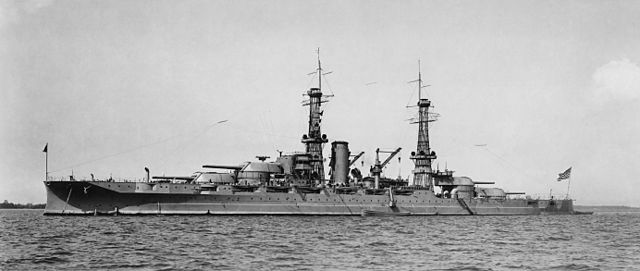
During the period between WWI and World War II, the ship underwent numerous modifications and updates.
Japanese attack on Pearl Harbor
In April 1940, the USS Arizona and the rest of the Pacific Fleet were moved from California to Pearl Harbor to serve as a deterrent to Japanese imperialism. The day before the attack on Pearl Harbor – December 6, 1941 – the ship had taken on a full load of fuel, nearly 1.5 million gallons, in preparation for a trip to the mainland later that month.
On the morning of December 7, the USS Arizona was anchored off the coast of Ford Island. When the Japanese attacked, it was struck by horizontal bombers and received minor damage to its after and midship areas. Just after 8:00 AM, the devastating blow came when the ship was struck by a 1,760-pound projectile. The impact caused her fuel and munitions to ignite, resulting in an explosion that lifted the ship out of the water.
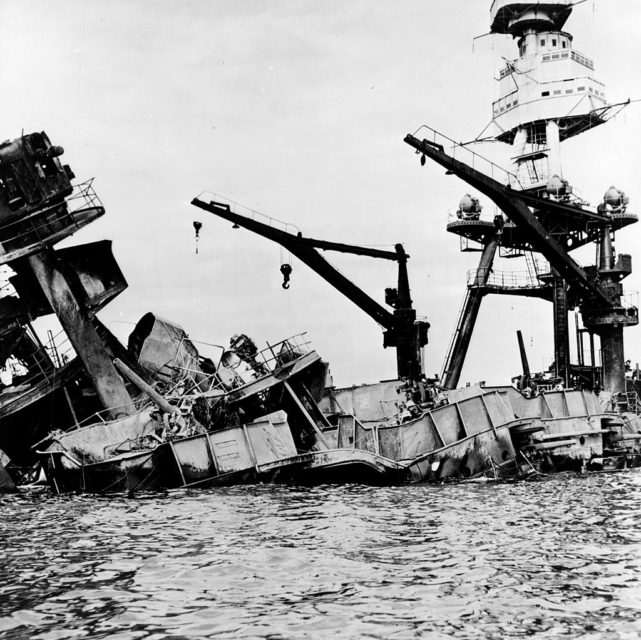
“It wasn’t a bomb itself that created the giant explosion,” Jay Blount, spokesman for the Pearl Harbor National Memorial, told TIME in 2019. “It was her own ammunition – hundreds of thousands of ammunition, exploding all at the same time.”
The USS Arizona sank in approximately 40 feet of water. While the majority of the ship went below the waves, some parts did not, and she remained ablaze for two and a half days.
Death of 1,177 individuals
Almost half of all those who perished at Pearl Harbor were aboard the USS Arizona. While between 334 and 355 crewmen managed to survive the attack and subsequent explosion, 1,177 were not so lucky. Among those killed were the ship’s Commanding Officer, Captain Franklin Van Valkenburgh, and Rear Admiral Isaac C. Kidd, Commander of Battleship One Division.
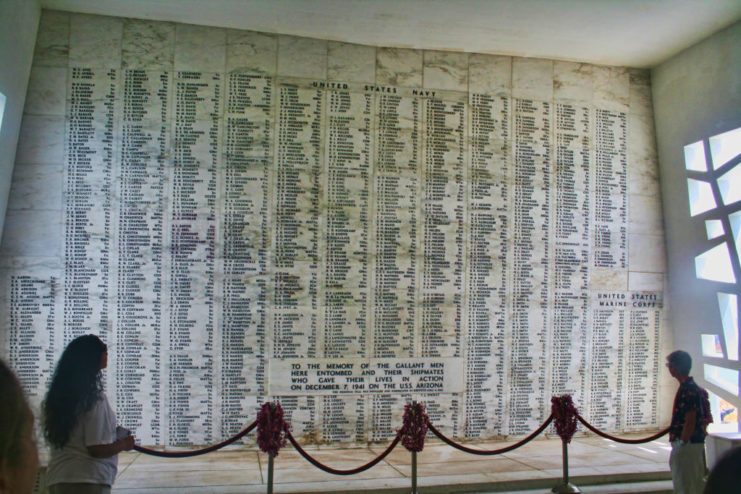
Those also killed in the blast include 23 sets of brothers, as well as all 21 members of the ship’s band, US Navy Band Unit (NBU) 22. When the Japanese attacked, the majority of its members were on deck, preparing to play music for the daily flag-raising ceremony. They quickly moved to their battle stations below the ship’s gun turret.
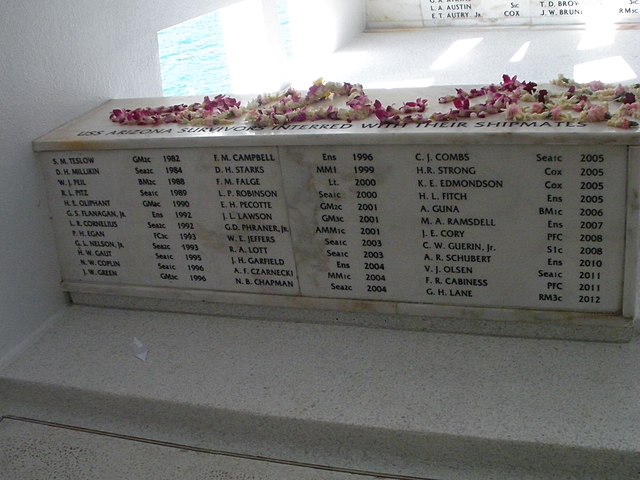
Immediately following the attack, efforts were made to retrieve those aboard the USS Arizona. However, the decision was eventually made to leave more than 900 bodies within her wreckage. It has since become common practice for those who survived to have their ashes placed with the ship, so that they are laid to rest with their fallen comrades.
USS Arizona after the attack on Pearl Harbor
Following the attack on Pearl Harbor, the USS Arizona was deemed a total loss. Unlike other vessels that had been sunk, it was not raised and instead left off the shore of Ford Island. As the Second World War raged on, crews were sent to the wreckage to salvage parts that could be reused for the war effort.
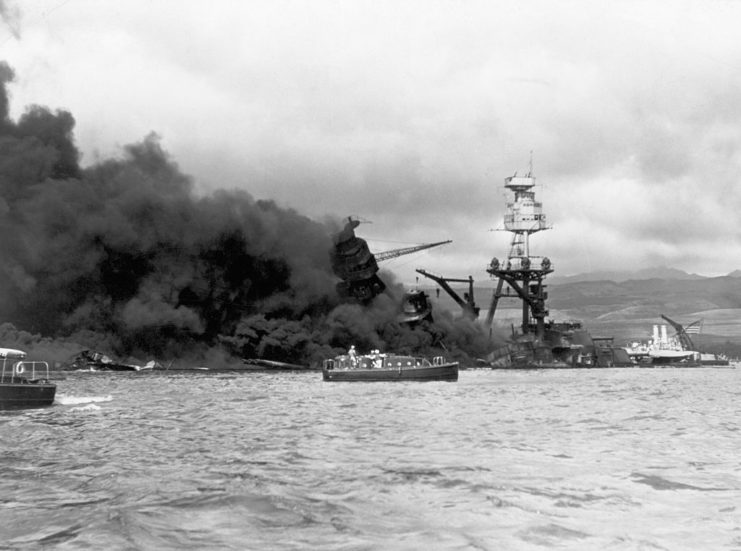
While the ship was decommissioned and deleted from the US Navy‘s register in late 1942, she was symbolically re-commissioned in 1950.
Commemoration of those lost aboard the USS Arizona
In 1958, President Dwight D. Eisenhower approved legislation that would allow the Pacific War Memorial Commission to erect a memorial for the USS Arizona. However, no federal funds were allotted for its construction, meaning donations were needed to make up the $500,000 price tag. One person to get involved in the effort was Elvis Presley, who held a benefit concert that raised $64,000.
Construction on the memorial began in 1960, under the eye of Austrian-born architect Alfred Preis, and was officially dedicated on May 30, 1962. The 184-foot-long concave white concrete and steel structure spans the width of the wreckage, and features a design representative of where the US stood during World War II: the middle representing the country’s low point following the attack and the raised ends signifying its victory. Its 21 open-air windows are said to represent a 21-gun salute.
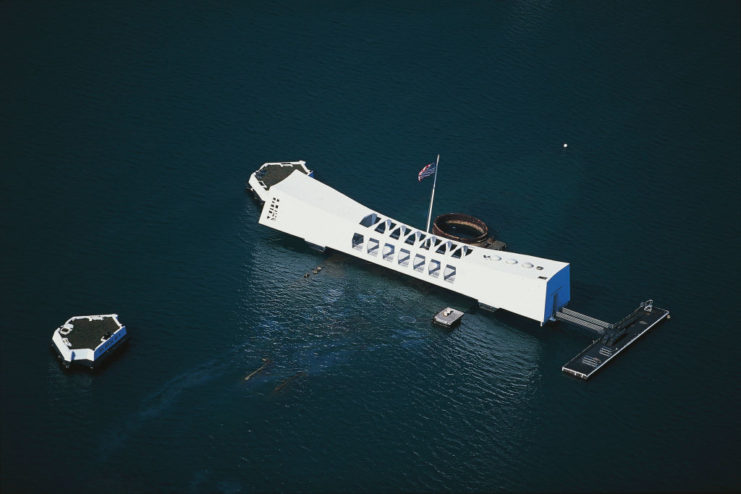
In 1980, oversight of the memorial was given to the National Parks Service (NPS), which continues to maintain the structure to this day. It’s estimated that approximately 1.8 million people visit it each year.
Environmental concerns
Given the amount of fuel aboard the USS Arizona on the day it sank, there have been concerns raised over the wreckage’s environmental impact. Since December 7, 1941, it has continued to leak oil, causing the NPS in the mid-1990s to commission a series of studies to determine the long-term effects.
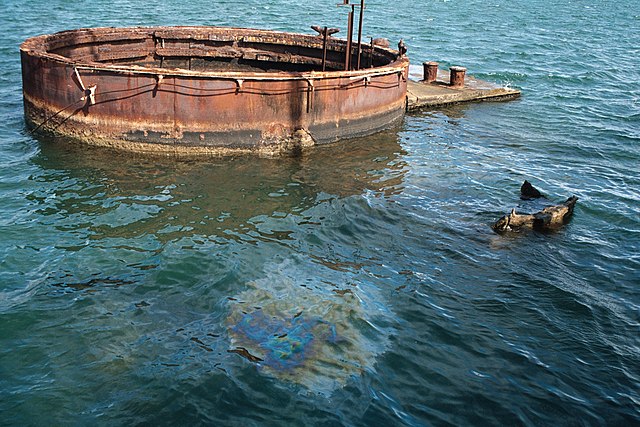
More from us: Pentagon Ends Program to Identify Sailors Killed During Attack on Pearl Harbor
Scientists and environmentalists have discussed the potential of a “catastrophic” eruption of oil from the USS Arizona, which would devastate the Hawaiian shoreline and disrupt US naval operations in the area. While the NPS is reluctant to perform repairs on the wreckage, due to its designation as a “war grave,” it and other government agencies continue to monitor it for deterioration.
